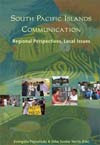 By Violet Cho: Pacific Media Centre
By Violet Cho: Pacific Media CentreA new Pacific-focused journalism course is scheduled for opening next year to address a shortage of Pasifika journalists in the media industry and to help provide more cutting-edge reporting in the region.
With the core expectation of increasing the numbers of trained working journalists from Pacific Island communities, AUT University and the Pacific Islands Media Association have initiated the one-year Graduate Diploma in Pacific Journalism to encourage more young islanders to join the media.
A Television New Zealand digital channel presenter and author, Sandra Kailahi, says it is urgent to increase the number of trained Pacific journalists and to generate more interest in Pacific media.
“We hope this course will address the serious shortage of trained Pasifika journalists in New Zealand and to also support the education of regional Pacific journalists,” says Kailahi, a former vice-chair of PIMA.
“Another objective is to encourage palagi [non-Pasifika] students and journalists to extend their cross-cultural understanding and reporting skills,” she added.
Aaron Taouma, who recently stepped down as acting chair of PIMA, says the number of Pacific Islands people in the media generally is small - and within journalism is even smaller.
The number of trained journalists in proportion to the population is below other major demographic groups.
“Providing training in journalism therefore provides greater skills for those who wish to enter the industry and also stimulates the industry in terms of providing an avenue for training in the first place,” says Taouma.
Pasifika perspective
According to PIMA, “Pacific journalism” means journalism from the perspective of indigenous Pacific Islanders, involving stories about their affairs and issues.

This comprises several distinct ethnic populations, including Cook Island Māori, Fijian, Kiribati, Niuean, Samoan, Tahitian, Tokelauan, Tongan and Tuvaluan.
Involved in the initial stages of developing the course, Taouma says “the programme is providing an avenue for students from various ethnic groups to gain training in journalism.”
Dr David Robie, associate professor in communication studies and director of the Pacific Media Centre at AUT, who steered the new programme through the government approval process, says this type of niche course is an innovation in New Zealand.
“This new course targets Pasifika students and we hope that it will contribute to a growing number of Pacific journalists joining the media industry,” he says.
The programme will start in March 2010 and is designed for mature students, people who do not necessarily have formal qualifications but have experience in the media industry, and those who have done a degree in another field but want to get started in journalism.
It is also open to journalists from the South Pacific region.
Embedded papers
As part of the programme, students will take core journalism courses within AUT’s Bachelor of Communication Studies, as well as new papers such as Māori and Pasifika media industry and reporting the South Pacific region.
“It is a journalism course embedded in our broad journalism programme so people will get all the core journalism that everybody else gets. But they will get more than other students because they have special value-added Pacific papers,” says Dr Robie.
“The programme will also be taught by Pasifika journalists.”
Isabella Rasch, Pasifika student support adviser at AUT University, believes the journalism programme will allow a growth of indigenous voices to be acknowledged within the media industry.
“It’s important that Pasifika journalists are not being seen as a minority or as the ‘other’,” she says.
She also suggests that the curriculum make good use of Polynesian and Māori ways of knowing, storytelling, oral dynamics, and traditional speaking as a main part of the learning.
New Zealand used to have a Pacific-focused journalism course in the past but it closed in the early 1990s due to lack of funding.
Some Pasifika journalists say this has left a gap in the industry in terms of turning out a high number of Pacific journalists.
Filling a gap
Many of the leading Pasifika journalists working in the industry today in New Zealand were the products from this journalism training. They include prominent journalists such as Tapu Misa, Barbara Dreaver, Niva Retimanu, Joe Lose, Sandra Kailahi, Lito Vilisoni and John Utanga.
The programme also aims to fill a gap in New Zealand mainstream media, which critics say has been failing to sufficiently represent and reflect Māori and Pasifika voices.
“I think it would help mainstream media to break down some of the stereotypes that they portray and have about Pacific people in everyday stories,” says Kailahi.
“We can also get to tell the story the way we want to and with our own people.
“There is an increasing call for journalism education and training to help Pasifika journalists tell our stories and provide our side of the debate. This course will allow that to happen.
“Plus it will be great to see more brown faces on TV in mainstream media and in newspaper bylines,” she says.
Journalism is not high on the agenda as a career choice for many Pacific parents and some have a limited awareness of the profession - such as simply thinking it is about being on TV.
Aaron Taouma says Pasifika journalists have an indepth knowledge of their own communities in which they report and they have experienced many problems such as trials and triumphs these communities face.
“More Pacific Island journalists means there is a greater understanding and therefore greater prospects for balance and solutions to social problems within society as a whole,” he says.
Violet Cho is the 2009 Asian Journalism Fellow attached to the Pacific Media Centre. She is on the Asia-Pacific Journalism course. Pictured: Sandra Kailahi (top) and Dr David Robie.
Course information about the Graduate Diploma in Pacific Journalism






















No comments:
Post a Comment